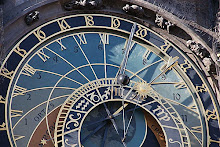Under the surface of Madagascar, deep in the caves sacred to the Antakarana and Tsimihety peoples, lurk the Kalanoro.
A recent Internet story alleges Navy SEALs photographed a group of 13 Kalanoro in the late 1990s-early 2000s in the Democratic Republic of the Congo – far from the island of Madagascar. These Kalanoro were described as a gray “unidentified ape” with quills that run along its spine.
Legends of the Kalanoro are older than 1997 … much older. The Kalanoro have been a part of Madagascar traditions since people arrived there 2,000 years ago. But opinions differ on what the Kalanoro might be.
According to travelafricamag.com, the Kalanoro is a physical creature covered with hair, less than three feet tall with long fingernails. One was reportedly captured by the Royal Geographical Society in 1889. The society discovered the Kalanoro not only had feet that point backward, the creatures were telepathic.
In the 1964 volume Western Folklore, Vol. XXIII, an article by Bacil F. Kirtley – “Unknown Hominids and New World Legends” – paints the Kalanoro of Madagascar as a “land-dwarf” that, much like European elves and trolls, steals human children and replaces them with Kalanoro children.
University of Missouri-Columbia professor Joe Hobbs knows something about the Kalanoro, and their connection to children. While researching the relationship between people and caves in Madagascar, Hobbs came into contact, not with the Kalanoro, but with local people who are convinced the Kalanoro exist.
“This story may strike some as funny,” Hobbs wrote in a recent e-mail. “But the people in Madagascar are quite serious about these and other spiritual beings.”
Unlike travelafricamag.com, Kirtley and the Navy SEALs story, the local people don’t consider the Kalanoro to be animals – they are spiritual beings. In Hobbs’ 2001 article, “People and Caves in Madagascar,” published in The American Geographical Society’s Focus, the people of Madagascar refer to the Kalanoro as “earth genies.”
People of Madagascar who have historically buried their dead in caves have a great respect for the Kalanoro – because the Kalanoro physically interact with them. One Kalanoro near the village of Ambalakida, pays particular attention to bad parents, Hobbs said.
“On three separate occasions, one as recently as 1998,” Hobbs wrote in his 2001 article. “The being became angry that parents had insufficiently cooked meat for their children and done other things particularly unacceptable to it.”
Unhappy with the parents, the Kalanoro kidnapped their children, Hobbs wrote. To get the children back, the distraught parents consulted another local spirit, a Tromba which had possessed a fellow villager. The tromba told the parents to leave offerings of honey and liquor in the forest. The parents did, the Kalanoro was pleased, and returned the children – one by one – to a local cave, the cave of Andoboara.
With permission from King Tsimiaro III, Hobbs visited the burial caves, including the cave of Andoboara, and saw first-hand the Kalanoro’s influence on the local cultures.
“The night we visited the cave, my assistant Patty Vavizara stayed close to me, fearful that the Kalanoro might be about,” Hobbs wrote.
Regardless of whether the Kalanoro are real or legend, animal or intelligent and telepathic, unknown hominid or earth spirit; to the peoples of Madagascar, the Kalanoro are real.
Copyright 2007 by Jason Offutt
Got a scary story? Ever played with a Ouija board, heard voices, seen a ghost, UFO or a creature you couldn’t identify? Let Jason know about it: Jason Offutt c/o The Examiner, 410 S. Liberty, Independence, Mo. 64050, or jasonoffutt@hotmail.com. Include your name, address and telephone number. Your story might make an upcoming installment of “From the Shadows.”
Jason’s book of ghost stories, “Haunted Missouri: A Ghostly Guide to Missouri’s Most Spirited Spots,” is coming in May. FREE SHIPPING when you order online at: https://tsup.truman.edu/store/ViewBook.aspx?Book=849. Visit Jason’s Web site, www.jasonoffutt.com, for his other books.
Subscribe to:
Post Comments (Atom)









No comments:
Post a Comment